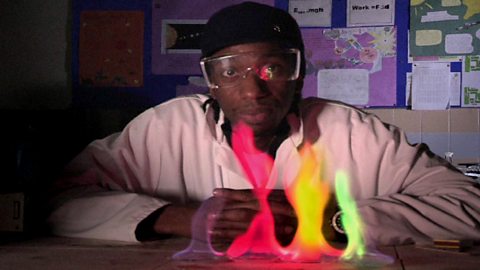Jon Chase explains the nuclear fusion that causes stars like our sun to give out enormous heat.
Film footage of a nuclear explosion in a hydrogen bomb is used to draw an analogy with the sun’s energy.
He mixes iron oxide and alumium powder to demonstrate a highly exothermic chemical reaction and relates this to the much greater energy output of the sun.
This short film is from the 91»»±¨ series, Space Science Bites.
Teacher Notes
Students could produce a poster on nuclear fusion in stars and compare with nuclear fission.
This could also lead to an introduction to practical activity or demonstration of the Sun’s energy using a solar panel to produce electricity or to heat water.
Students could undertake calculations using temperature and energy figures.
Observe changes in colour of metal as its temperature is increased from dull red to white.
Curriculum Notes
This short film will be relevant for teaching physics.
This topic appears in OCR, Edexcel, AQA, WJEC KS4/GCSE in England and Wales, CCEA GCSE in Northern Ireland and SQA National 4/5 in Scotland, and Cambridge IGCSE Physics.
More from Space Science Bites:
Gravity on Earth and in space. video
Jon Chase demonstrates why he would weigh more on Jupiter than on Earth.

The life cycle of stars. video
Jon Chase explains how the dust and gas released from dying stars forms new stars and solar systems using a popular game and a rap.

The Big Bang and red shift. video
Jon Chase explains the scale of the solar system and universe using simple demonstrations.

Spectroscopy and the composition of stars. video
Jon Chase demonstrates a spectrometer made from a cardboard tube and an old CD to people in a shopping centre.

Waves and communication. video
Jon Chase demonstrates how electromagnetic waves are used in communication using an infra-red remote control and an outside TV broadcast.

Ã˝